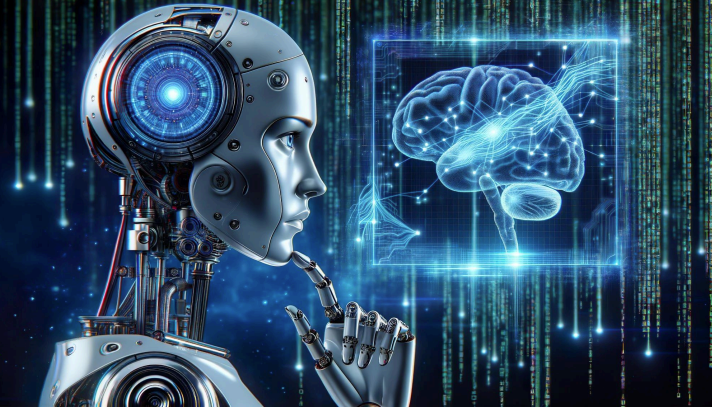Address
227B, Muri Okunola Street Victoria Island, Lagos
Work Hours
Monday to Friday: 8AM - 5PM
Weekend: Closed
Address
227B, Muri Okunola Street Victoria Island, Lagos
Work Hours
Monday to Friday: 8AM - 5PM
Weekend: Closed

The start of a new year always brings excitement, but 2025 feels particularly special. The
tech world is buzzing with innovation, and what was once futuristic fantasy is now inching
closer to reality. From redefining how we interact with technology to addressing global
challenges, the trends of 2025 are not just cool; they’re impactful.
In this article, we’ll explore five key trends that are making waves and look at how
forward-thinking companies like Dataflex can stay ahead in this ever-evolving landscape.
In 2025, AI and machine learning are revolutionizing our daily lives through
hyper-personalization. Advanced AI systems analyze vast datasets to offer tailored solutions
across industries like retail, healthcare, and education.
For instance, fitness apps now predict optimal workout routines based on individual
performance and goals. Financial platforms provide personalized investment strategies by
analyzing spending patterns and financial behavior.
This shift is creating a seamlessly intuitive, intelligent ecosystem that anticipates needs and
adapts in real-time. As AI continues to advance, it pushes the boundaries of what’s possible,
ushering in an era of smarter, more responsive technology.
To stay ahead, businesses must embrace AI solutions that prioritize deep user
understanding, integrating efficiency with personalization to create connections. 2025 marks the beginning of a truly AI-driven future, and those who invest in it
now will lead the way. meaningful, lasting
As digital ecosystems grow more interconnected, traditional security perimeters are no
longer sufficient. AI is transforming cybersecurity as well as cyber threats. Industry
executives in a survey ranked AI and Gen AI in cybersecurity as the topmost trend out of
more than 60 trends for 2025. Enter the cybersecurity mesh, a groundbreaking approach
that decentralizes security. Instead of focusing on a single entry point, it secures access at
multiple nodes, ensuring a more flexible and robust defense against cyber threats.
This innovation is especially critical in a world where edge computing, IoT devices, and cloud
solutions dominate. Whether it’s safeguarding sensitive healthcare records or preventing
financial fraud, the cybersecurity mesh adapts dynamically to evolving threats, offering a
tailored solution for complex environments.
For companies navigating these challenges, partners like Dataflex can make all the
difference. By providing expert guidance and implementing advanced security architectures,
Dataflex helps businesses secure their data while maintaining seamless operations. With a
focus on flexibility and resilience, organizations can stay ahead of cyber threats in 2025 and
beyond.

In 2025, robots are no longer just a futuristic concept—they’re actively reshaping industries.
From manufacturing to healthcare, robots equipped with AI and advanced sensors are
enhancing productivity, safety, and precision. These intelligent machines are taking on
repetitive tasks, allowing humans to focus on higher-level problem-solving and creativity.
In industries like logistics, warehouses are becoming increasingly automated with robots
handling everything from sorting to delivery. In healthcare, robotic surgery assistants are
becoming more common, providing precision that minimizes recovery time.
As businesses continue to adopt automation, the workforce is evolving. While some jobs
may change, new opportunities in robot maintenance, programming, and supervision will
emerge. The future is one where humans and robots collaborate seamlessly to achieve
greater efficiency and innovation.
In 2025, it’s clear that being green is no longer optional—it’s essential. Tech companies are
stepping up, creating sustainable solutions that align with global environmental goals. From
energy-efficient data centers to biodegradable devices, the focus is on reducing carbon
footprints while driving innovation.
For businesses, adopting sustainable practices is both an ethical responsibility and a
competitive advantage as they are not only contributing to a greener planet but also
appealing to eco-conscious customers.

Virtual reality (VR), augmented reality (AR), and mixed reality (MR) are converging into
extended reality (XR). This isn’t just about gaming anymore—XR is finding its place in
education, real estate, and even healthcare.
Imagine taking a virtual tour of your next home purchase or surgeons using AR overlays
during procedures. The potential is limitless, and XR is transforming how industries engage
with customers and employees alike.
Early adopters of XR are already creating immersive experiences that captivate and
educate, setting themselves apart in competitive markets.
2025 is shaping up to be a year of transformation. These trends are not just reshaping
industries—they’re redefining the way we live and work, and as we navigate this exciting
year, one thing is clear: adaptability and foresight will be the defining traits of successful
organizations. For businesses, staying ahead means embracing innovation and aligning with
forward-thinking solutions.
So, which of these trends are you most excited about? Let’s start a conversation about the
future—because it’s already here.
Connect with Us
